Technology and rate of sowing corn in open ground: how and when to plant
Corn is a valuable agricultural crop with excellent taste and a wide range of useful elements for the human body. This allows it to be used in cooking and as animal feed. Getting high crop yields depends on the preparation of seeds and soil, sowing time and the rate of corn seeding.
Corn: an advantageous neighborhood with other crops
Corn does not make high demands on crop rotation and proximity to other crops, since it does not have common pests and diseases with them, except for fusarium. Do not plant it after millet, because both crops can be affected by the corn moth. For yields, it is more important to plant corn at the time optimal for the area.

Corn grows best after manure-fertilized row crops and legumes, as well as after winter and spring wheat, rye, barley, oats, alfalfa, clover, fodder and sugar beets, potatoes, buckwheat.
Permanent sowing of maize after maize for 6-10 years is possible on chernozems with the obligatory application of organic fertilizers. It can be grown on less fertile soils under the same conditions for 3-5 years.
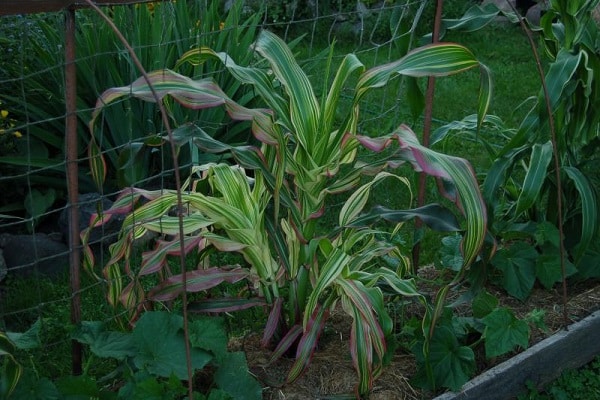
The root system of plants leaves behind a large content of organic matter in the soil, so soil fertility does not deteriorate. To a greater extent, the use of herbicides affects the condition of the soil. They should be selected so that the consequences of their use do not affect the cultivation of other crops.
How to plant corn outdoors?
Corn is a tall, light and heat-loving plant. It forms a root system deeply penetrating into the soil. The duration of the growing season from seedling to ripening depends on the variety and ranges from 70 to 120 days. In private farms, it is preferable to grow early maturing varieties.

Planting corn in open ground is carried out in the soil warmed up to a temperature of 10-12 ºС.
For the fastest possible start of seedlings and their protection from damage by harmful plaque and rot, much attention is paid to the soil. Preparation of areas is carried out in the fall:

- a site for planting is dug to the depth of a shovel bayonet, freeing the soil from pests along the way;
- make compost at the rate of 5 kg per 1 sq. m, if necessary add ash and sand;
- acidic soils are limed by adding 2-3 kg of lime per 10 square meters. m;
- after 2 weeks, the site is dug up again and the weeds are removed.
In the spring, before planting, the soil is loosened.
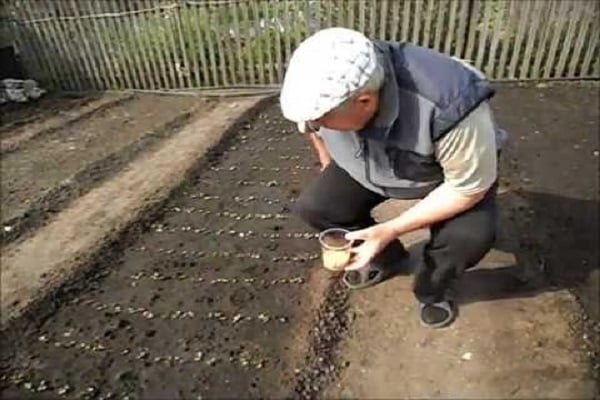
How to plant corn with seeds: diagram
Since the culture is a monoecious plant, for better pollination it is recommended to plant it by the ordinary method or by the square-nest method of planting corn.
In the first case, they are planted in 4 rows with row spacing of 50-60 cm. The distance between the plants should be about 30 cm. If planting is carried out with dry seeds, 3-4 grains are sown in each hole, covered with damp soil and dry soil on top. After the emergence of shoots (after 10-12 days), the seedlings are thinned out, leaving the strongest plants.
With the square-nested method, a distance of 45 cm is maintained between the holes.It is important to adhere to the recommended planting schemes, since:

- Full-fledged ear tying is possible only when the plantings are arranged in several rows.
- Photophilous culture does not tolerate shading.
- At the initial stages of development, seedlings give a small increase and may suffer from overdrying of the soil in the aisles.
To ensure a good yield per hectare, 1 hectare is planted:
- from 20 to 60 thousand plants at growing corn for grain and silage;
- from 150 to 200 thousand - for green forage.
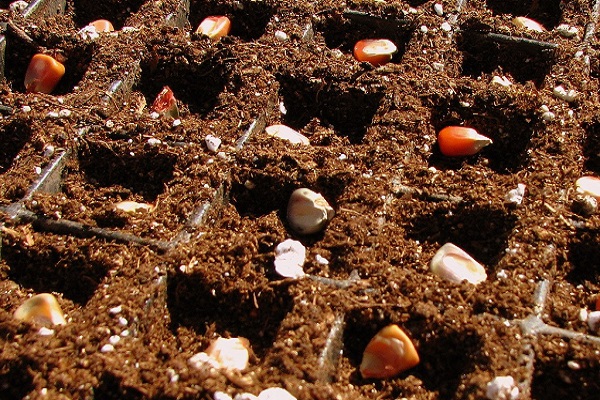
What sowing machine is used to plant corn?
Seeders for sowing corn are similar in design to devices for sowing legumes and sunflowers. After starting, air is blown into the seeding unit of the device, and the tedder delivers seeds to the spreading disc. When furrowing corn seeds through the holes in the spreading disc, they fall into the furrow and the fertilizer is poured there. A layer of earth is poured on top and local compaction is carried out in the sowing zone.
For processing large areas, mechanized seeders attached to a tractor, such as Lindselmash (Belarus), Krasnaya Zvezda (Ukraine), John Deere (USA) and Gaspardo (Italy), are used. In private farms, small areas are easily cultivated by hand, so seeders are not used.
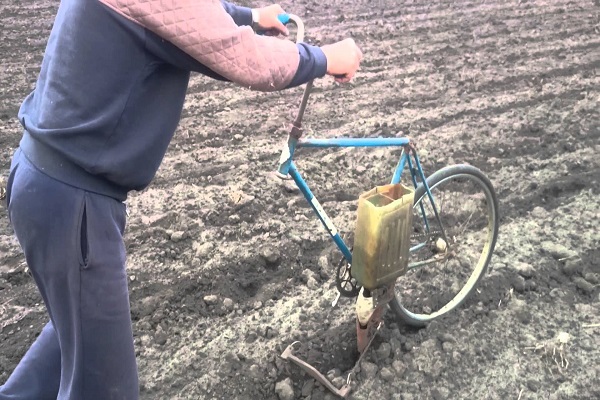
The mechanization of agricultural work using the "zero tillage" method involves the use of mulchers to crush the green mass remaining after the previous harvest.
How deep should you plant your corn?
Planting crops can be done in two ways: seedlings and seeds. It is easier to plant corn in open ground with seeds. To obtain friendly seedlings, they are pre-soaked in water or an antibacterial solution at a temperature of 20-25 ºС... To provide air access to the seed, it is placed in gauze, cloth or burlap.
Soaking the seeds ensures their quick and friendly germination and saves seed. If when sowing with dry seeds 3-4 grains are planted in a hole, then germinated - 1 or 2. They are sown to a depth of 5-6 cm, if the soil is prone to drying out - by 8-10 cm.

How and when to plant corn seedlings?
Growing corn in seedlings shortens its ripening period by 3-4 weeks. Sowing dates depend on the region. Plants are planted in open ground a month after germination.
For growing seedlings, prepare ground pots or other containers with a volume of at least 200 ml. They are filled with soil mixture, for the preparation of which an equal amount of sand and humus or peat is mixed with a small addition of nitrophoska and ash.
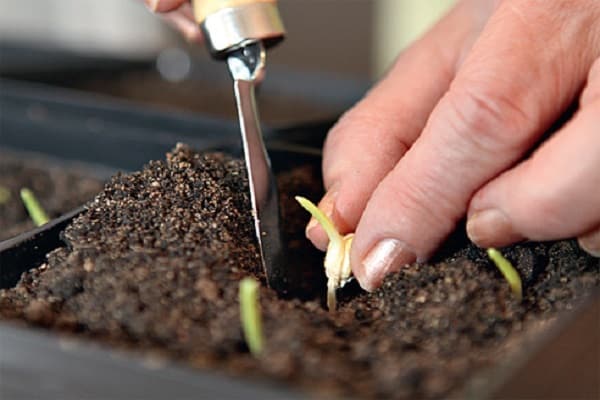
Seeds pre-soaked for a day are planted in pots to a depth of 1-2 cm and sprinkled with sand. The seedling cups are kept warm at a temperature of 25 ° C until shoots appear. After the sprouts appear, they are transferred to a cool room. A week before planting, the seedlings are watered and fed.
To less injure the plants, before planting them in open ground, the soil in the pot is moistened. Since the root system of corn does not tolerate damage well, the plant is carefully removed from the seedling pot along with a lump of earth and planted in holes 5-10 cm deep.The spacing between plants is the same as between seeds in a row when planting in open ground.
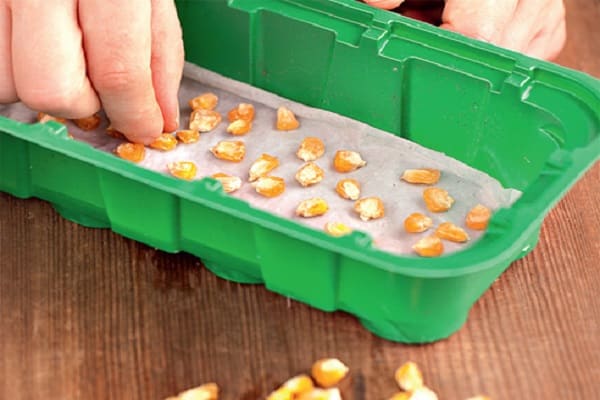
You should not expect a good harvest from seedlings that were not sufficiently fertilized, outgrown or did not tolerate transplanting well. Therefore, among gardeners, the opinion was formed that the best result is obtained by sowing seeds directly into the ground.
Further care of the corn plantings consists in regular weeding and loosening of the soil. It is useful to huddle plants, as it is:
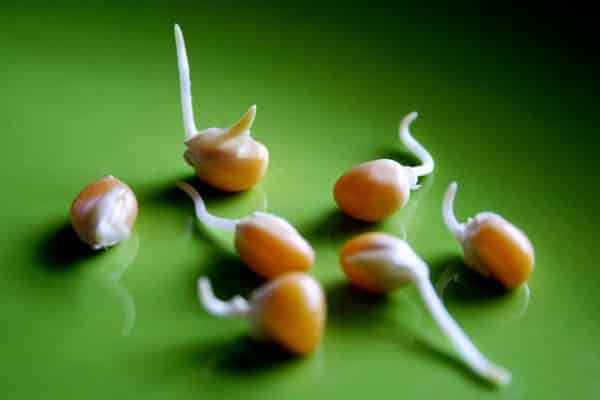
- saves moisture in the soil;
- activates the growth of the root system;
- prevents the leaching of nutrients from the soil;
- protects against weeds and diseases;
- improves air exchange.
In some varieties of corn, stepchildren can form, which draw back moisture and nutrients. They are cut with a sharp knife to speed up the ripening of the ears.

When to plant corn?
Sowing corn on time is essential. Agricultural technicians believe that the yield of a crop depends on weather conditions by 45% and on compliance with the cultivation technology by 36%. Several factors affect the sowing time:
- maize variety - for regions with short summers, varieties that ripen earlier are chosen;
- the age and condition of the seedlings - the stronger and older the plants, the faster the ears will ripen;
- weather conditions - the total temperature for germination of sprouts is 100 ºС, that is, at a steady average daily temperature of 10 ºС, emergence of seedlings can only be expected for 10 days.
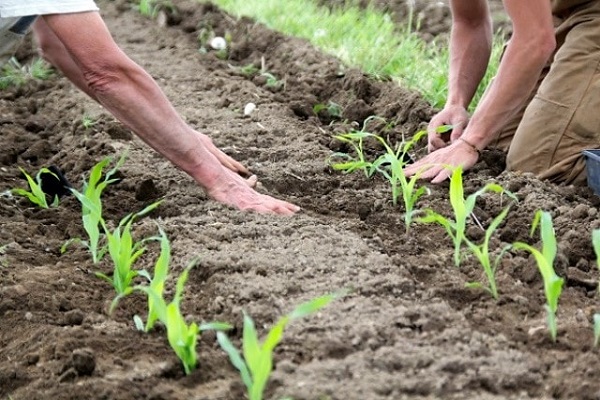
Scientific calculation
Sowing of corn, depending on the region, begins in late April - early May. In northern latitudes, you will have to wait until June and even early July. Seeds germinate at a temperature of 8-10 ºС, seedlings can withstand short-term frosts up to -2 ºС, but when the temperature drops to -3 ºС they die.
Corn is a thermophilic plant, and at ambient temperatures below 7 ° C, leaf formation stops. Sudden temperature drops and cold nights inhibit plant development and lead to an increase in the growing season. A delay in sowing leads to a decrease in yield by 1%. So, when sowing corn 5 days later than the optimal timing, the yield will decrease by 5%.

Sowing in open ground in southern Russia is recommended to be carried out in early May, in the Central lane and the Moscow region - 3-4 weeks later. Cold-tolerant hybrids can be sown earlier, but they need protection (covering material or film stretched over arcs).
In Siberia, vegetable corn is planted in a well-heated area in late May - early June. Black agrofibre accelerates soil heating. Nevertheless, the cobs do not have time to ripen.
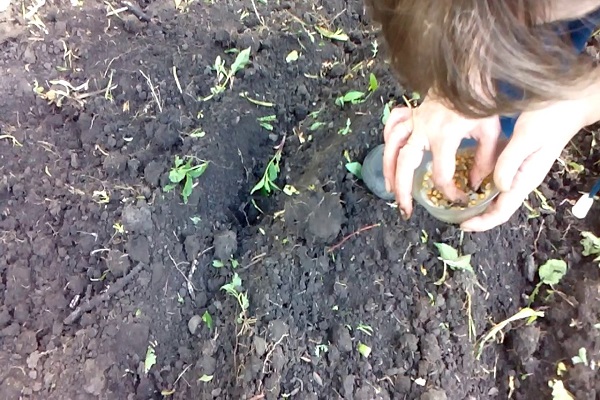
Moon calendar
Farmers in ancient times noticed the influence of lunar cycles on the development of plants. If the Sun is the source of life, then the circulation of the received solar energy depends on the Moon. With the growing moon, the sap of the plant rises to its upper part, and when the moon is waning, it sinks to the roots.
Growing sweet cobs faster than your neighbors - this is possible if you sow corn in the first phase of the moon, when it is in Cancer, Scorpio and Pisces. It is not at all necessary to master astrological knowledge and conduct regular observations of the starry sky. In order to make better use of favorable days to increase yields, astrologers compile a sowing lunar calendar for each month.
The use of the lunar calendar for planting vegetables is considered by some to be superstition, but gardeners who adhere to the recommendations of astrologers are more likely to get good harvests.
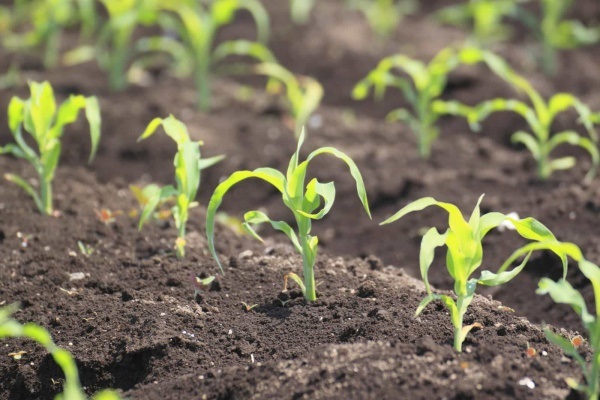
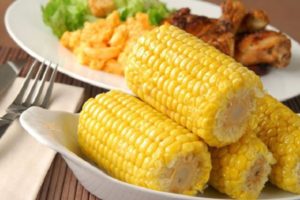
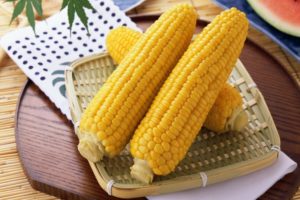

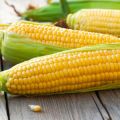
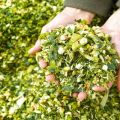
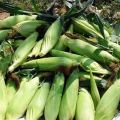


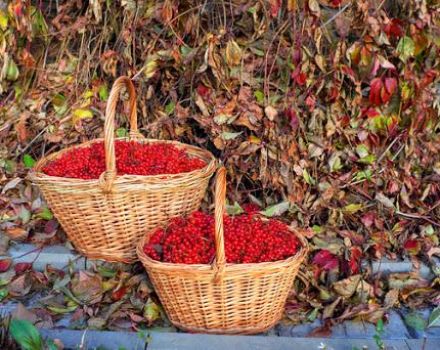

This year the spring turned out to be cold, so for faster growth I acquired BioGrowwhich I used last year. The corn crop then pleased - the ears were large and well ripe.